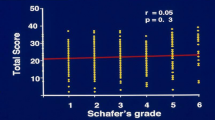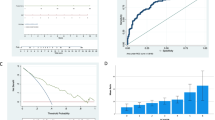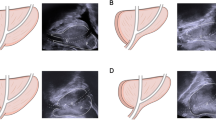Summary
The present discussion on the natural history, growth rate, pathophysiology, morbidity, and possible treatment of benign prostatic hyperplasia (BPH) reinforces the need to objectify mechanical BPH-induced obstruction with pressure-flow study. Different methods for the quantification of BPH-induced obstruction exist and the grade of simplification depends on their working mechanism. To review the limitations of the current concepts, 118 BPH patients were selected for computerized pressure-flow data analysis according to quadratic passive urethral resistance relation (PURR) function. The CHESS classification differs from all other concepts due to its two-dimensional character and was developed as a result of the following way of thinking: (1) the whole individual pressure-flow plot is the most accurate basis for further analysis; (2) PURR as the true low-pressure flank of the individual plot is the most favorable definition for mechanical obstruction; (3) PURR quantification requires at least two parameters, footpoint and curvature/slope, with regard to the documented missing significant correlation of both; and (4) a two-parameter-based classification is two-dimensional (CHESS classification).
Similar content being viewed by others
References
Abrams P, Griffiths DJ (1979) The assessment of prostatic obstruction from urodynamic measurement and from residual urine. Br J Urol 51:129–134
Blaivas JG (1983) Differential diagnosis. In: Hinman F Jr (ed) Benign prostatic hypertrophy, Springer, New York Berlin Heidelberg, pp 747–762
Gleason DM, Lattimer JK (1962) The pressure flow study: a method of measuring bladder neck resistance. J Urol 87:844–852
Griffiths DJ (1980) Urodynamics. The mechanics and hydrodynamics of the lower urinary tract. (Medical physics handbooks series, vol 4) Adam Hilger, Bristol
Griffiths D, Mastrigt R van, Bosch R (1989) Quantification of urethral resistance and bladder function during voiding, with special reference to the effects of prostate size reduction on urethral obstruction due to benign prostatic hyperplasia. Neurourol Urodyn 8:17–27
Höfner K, Kramer AEJL, Tan HK, Grünewald V, Jonas U (1993) Advances in urodynamics. Eur Urol Update Ser 2:34–39
Höfner K, Tan HK, Kramer AEJL, Kuczyk M, Dalwig-Nolda D, Jonas U (1993) Changes in obstruction in patients with benign prostatic hypertrophy (BPH) after transurethral microwave thermotherapy. Neurourol Urodyn 12:376–377
Höfner K, Kramer AEJL, Tan HK, Grünewald V, Jonas U (1993) Chess clasification of outflow obstruction based on pressure flow analysis. Neurourol Urodyn 12:414–415
Jensen KM-E (1989) Clinical evaluation of routine urodynamic investigations in prostatism. Neurourol Urodyn 8:545–578
Kranse R, Mastrigt R van (1991) Fitting orthogonal polynomials to the lowest part of a pressure flow plot. Neurourol Urodyn 10:290–291
McGuire EJ (1992) The role of urodynamic investigation in the assessment of benign prostatic hypertrophy. J Urol 148:1133–1136
Rollema HJ, Mastrigt R van (1991) Objective analysis of prostatism: a clinical appraisal of the computer program CLIM. Neurourol Urodyn 10:71–76
Schäfer W (1983) The contribution of the bladder outlet to the relation between pressure and flow rate during micturition. In: Hinman F Jr (ed) B enign prostatic hypertrophy. Springer, New York Berlin Heidelberg, pp 470–496
Schäfer W (1985) Urethral resistance? Urodynamic concepts of physiological and pathological bladder outlet function during voiding. Neurourol Urodyn 4:161–201
Schäfer W (1990) Basic principles and clinical application of advanced analysis of bladder voiding function. Urol Clin North Am 17:553–566
Schäfer W (1992) Comparison of simple concepts of pressure flow analysis: URA versus linear PURR and p/Q diagram. Neurourol Urodyn 11:397–398
Schäfer W, Rübben H, Noppeney R, Deutz FJ (1989) Obstructed and unobstructed “prostatic obstruction”: A plea for objectivation of bladder outflow obstruction by urodynamics. World J Urol 6:198–203
Tubaro A, Ogden C, Rosette J de la, Höfner K, Trucchi A, Miano L, Carter S, Jonas U, Debruyne F (1994) The prediction of clinical outcome for thermotherapy by pressure-flow study. Results of a European multicenter study. J Urol 151:417A
Spångberg A, Teriö H, Engberg A, Ask P (1989) Quantification of urethral function based on Griffiths' model of flow through elastic tubes. Neurourol Urodyn 8:29–52
Author information
Authors and Affiliations
Rights and permissions
About this article
Cite this article
Höfner, K., Kramer, A.E.J.L., Tan, H.K. et al. CHESS classification of bladder-outflow obstruction. World J Urol 13, 59–64 (1995). https://doi.org/10.1007/BF00182667
Issue Date:
DOI: https://doi.org/10.1007/BF00182667




